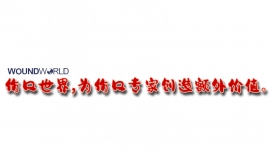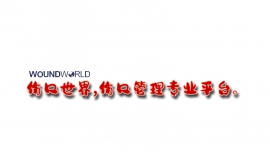文献精选
中华医学会医学美容学会激光美容学组,中华医学会皮肤性病学会美容激光学组
[关键词】 皮肤黏膜修复,光声电治疗术后;共识
[中图分类号】 R751.05[文献标识码】Bdoi:10.16761/i.cnki.1000-4963.2019.05.019
[文章编号]1000-4963 2019)05-0319-04
徐学涛1,张:l昆h,杜志云’,郑劭1,方岩雄1,卫星船1,赵肃清1,俞新华2(1.广东工业大学轻工化工学院,广东广州510006;2.华南农业大学生命科学学院,广东广州510642)
摘要目的:研究西藏红缨合耳菊提取物对酪氨酸酶的抑制作用。方法:将红缨合耳菊的70%乙醇提取物依次用石油醚、乙酸乙酯、正丁醇萃取。然后测定各部分对酪氨酸酶的抑制作用,并进行酶抑制动力学研究。结果:乙酸乙酯、正丁醇的萃取部分对酪氨酸酶的活性抑制较强;对单酚酶抑制作用明显并有延迟作用,半数抑制浓度(IC50)分别为57.8、140 pg/ml;对双酚酶的抑制作用显示浓度依赖关系,IC50分别为4I.2、59.6∥lIll,相比熊果苷抑制双酚酶活性的Ic,。值1.44rag/ml,抑制效果分别是熊果苷的35、24倍;抑制类型:乙酸乙酯部分为竞争性抑制,晒为19.7斗g/mJ,正丁醇部分为非竞争性抑制,鼬为60.7t∥ml。结论:西藏红缨合耳菊乙醇提取物的乙酸乙酯、正丁醇萃取部分对酪氨酸酶活性抑制较强。
关键词红缨合耳菊;酪氨酸酶;化妆品
中图分类号:R285.5
文献标识码:A
文章编号:1001掣54(2008)10-1544-04
Inhibition of Extracts from Synotis erythropappa OR Tyrosinase XU Xue·ta01,ZHANG Kunl,DU Zhi—yunl,ZHENG Jie。,FANG Yan.xiong‘,WE/Xing-ehuanl,ZHAO Su.qing。,YU Xin.hna2
(1.Faculty of Chemical Engineering and Light Industry,Guangdong University of Technology,Guangzhou 510006,China;2.College of Life Science,South China Agricultural University,Guangzhou 510642,China)
Abstract
Objectire:To study the inhibition of extracts from Synotis erythropappa On tyrosinase.Methods:The 70%ethanol ex. tracts were extracted by petroleum benzine,ethyl acetate and n-butanol,and the inhibitory activities against tyrosinase of every fraction were determined in vitro and the inhibitory kinetics of ethyl acetate and n-butanol fractions we地investigated.Results:The four fractions extracted all had inhibitory activities on tyrosinase。inhibitory activities of ethyl acetate and n-butanol fraction were higher.Their IC50 were 57.8、140 t,#ml for monophenol oxidase activity and 41.2、59.6 w旷IIll for diphenol oxidase activity,respectively.The inhibition kinetics analyzed by Hnewaver—Bunk plots showed that ethyl acetate fraction was a competitive type inhibitor,and its Ki Was de—termined to be 19.7 pe,/mL n·butanol fraction was an uncompetitive type inhibitor,and its Ki Was determined to be 60.7¨∥m1.Conclusion:Ethyl acetate and n—butanol fractions of extracts from Synotis erythropappa show potential inhibitory activity on tymsinase.
Key words
Synot/s erythropappa(Bur.et France)C.Jeffrey et Y.L Chen;Tyrosinase;Cosmetic
中华医学会医学美容学会激光美容学组,中华医学会皮肤性病学会美容激光学组
[关键词] 皮肤黏膜修复,光声电治疗术后;共识[中图分类号1R751.05[文献标识码]B
文章编号]1000-4963 2019)05-0319-04
doi:10.16761/i.enki.1000-4963.2019.05.019
中华医学会眼科学分会眼底病学组 中国医师协会眼科医师分会眼底病学组
通信作者:许迅,上海交通大学医学院附属第一人民医院眼科 国家眼部疾病临床医学
研究中心 上海市眼底病重点实验室 上海眼视觉与光医学工程技术研究中心 上海市眼科疾病精准诊疗工程技术研究中心,上海 200080,Email:该Email地址已收到反垃圾邮件插件保护。要显示它您需要在浏览器中启用JavaScript。
【摘要】 年龄相关性黄斑变性(AMD)是老年人群低视力乃至失明的主要原因,随着我国人口老龄化加剧,AMD的患病人数将持续上升。近10年,眼底影像学检查技术飞速发展,为AMD的分型、诊断和随访提供了新的视角和途径,新药的开发为 AMD尤其新生血管性 AMD提供了更为多样的干预和治疗方法,而强调精准个体化治疗对眼底病医师提出了更高要求。为此,中华医学会眼科学分会眼底病学组、中国医师协会眼科医师分会眼底病学组与国家眼部疾病临床医学研究中心基于最新循证医学证据,结合国际指南和我国社会经济发展现状,围绕 8个临床问题提出推荐意见,形成了我国的AMD临床诊疗指南,以期加强和完善我国AMD诊疗工作的规范化,提高我国AMD的诊疗、预防和随访水平。(本文于2023年4月6日优先出版在中华眼科杂志官网)
【关键词】 黄斑变性; 诊疗准则(主题); 循证医学
实践指南注册:国际实践指南注册与透明化平台,IPGPR‑2021CN111
Evidence‑based guidelines for diagnosis and treatment of age‑related macular degeneration in China (2023)
Chinese Vitreo‑Retina Society of Chinese Medical Association, Fundus Disease Group of Chinese Ophthalmologist Association
Corresponding author: Xu Xun, Department of Ophthalmology, Shanghai General Hospital, Shanghai Jiao Tong University School of Medicine, National Clinical Research Center for Eye Diseases, Shanghai
Key Laboratory of Ocular Fundus Diseases, Shanghai Engineering Center for Visual Science and Photomedicine, Shanghai Engineering Center for Precise Diagnosis and Treatment of Eye Diseases,
Shanghai 200080, China, Email: 该Email地址已收到反垃圾邮件插件保护。要显示它您需要在浏览器中启用JavaScript。
【Abstract】 Age‑related macular degeneration (AMD) is the main cause of low vision and even blindness in the elderly. With the aging of our population, the number of AMD patients will continue to rise. In the past decade, the rapid development of ocular fundus imaging technology has provided a new perspective and approach for the classification, diagnosis and follow‑up of AMD. The advent of new drugs has provided more diverse intervention and treatment methods for AMD, especially for neovascular AMD, and the emphasis on accurate and individualized treatment has put forward higher requirements for retinal specialists. Therefore, based on the latest evidence‑based medical information, combined with the international guidelines and the current situation of China′s social and economic development, experts from the Chinese Vitreo‑Retinal Society of Chinese Medical Association, the Fundus Disease Group of Chinese Ophthalmologist Association, and the National Clinical Research Center for Eye Diseases gave recommendations around eight clinical problems and formed China′s guidelines for the clinical diagnosis and treatment of AMD. With the implementation of these guidelines, we can standardize the diagnosis, treatment, prevention and follow‑up of AMD in China. (This article was published ahead of print on the official website of Chinese Journal of Ophthalmology on April 6, 2023)
【Key words】
Macular degeneration;
Practice guidelines as topic;
Evidence‑based
medicine
Practice guideline registration: Practice Guideline Registration for Transparency, IPGRD‑2021CN111


